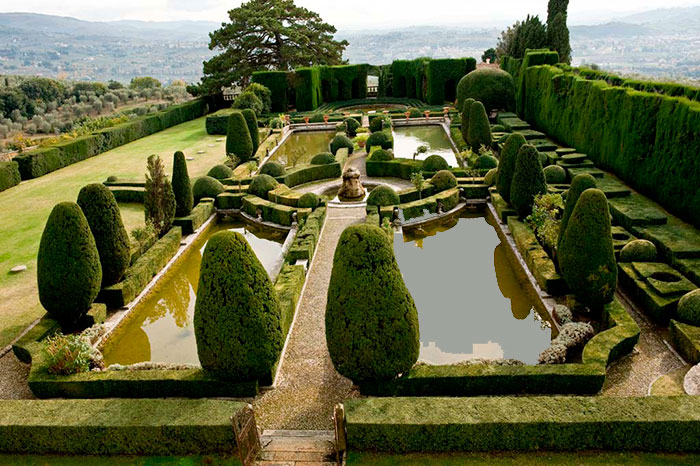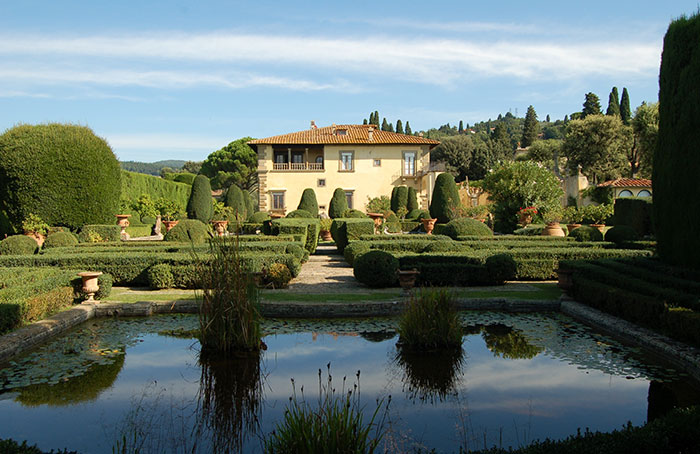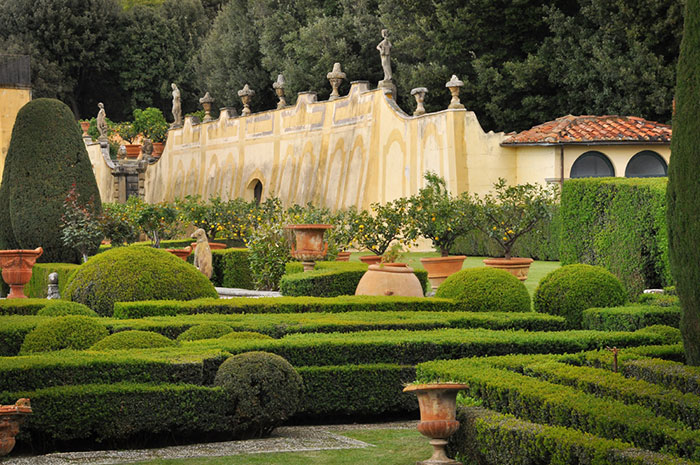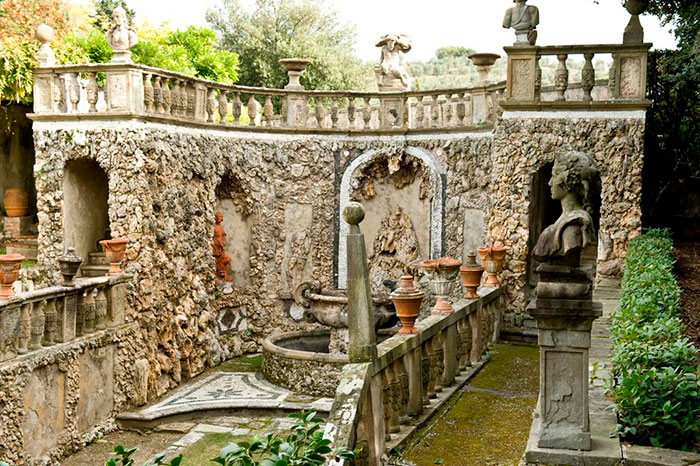



The villa, which belonged to the Benedictine nuns of San Martino since the 14th century, was purchased in the 18th century by the Capponi family, who shaped it into its current form, as depicted in 18th-century engravings. During this period, the rear garden was added, conceived as a courtyard decorated with rustic motifs and situated on a higher level than the main building, along with the orangery, where the citrus vases were kept, the holm oak grove, and the stone statues of animals.
During World War II, the villa and garden suffered extensive damage, so much so that the latter was no longer recognizable.
In 1954, based on old documents, a long restoration began that returned the villa to its former glory.
The most interesting part of the garden is located on the south side of the building. Here, a magnificent parterre, commissioned by Princess Ghyka and crafted by local gardeners, divides the ground into four elongated, rectangular water features, highlighted by boxwood hedges, often doubled, culminating in a semicircular viewing platform framed by arched cypress trees. This creates a theatrical effect reminiscent of an 18th-century theater. The vegetation offers a glimpse, in perspective, of a grand Florentine countryside.
Parallel to the villa and the parterre is an extensive lawn, flanked by a high wall decorated with statues, interrupted at one point to allow access to a small garden, whose lawn is decorated on both sides by vases of hydrangeas and ending in a cave, where we can appreciate pebble mosaics, sandstone and terracotta figurines.
Two double staircases, flanked by a rich balustrade with columns representing fruit, lead to a holm oak grove on one side and a row of orange trees on the other. Beyond this lies another holm oak grove, which connects to the long meadow; from here, one reaches an oval-shaped garden that ends with a grotto containing a water basin with a statue of Neptune.
It was during our visit to this Renaissance garden that we discovered that among the boxwood hedges and cypress trees were two rose bushes, one on each side of the arch.
The reason is not decorative, but preventative. Rose bushes are used in this case as disease detection plants.



0 comments